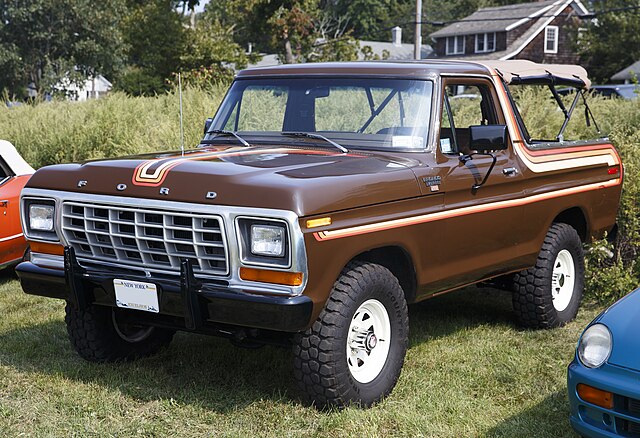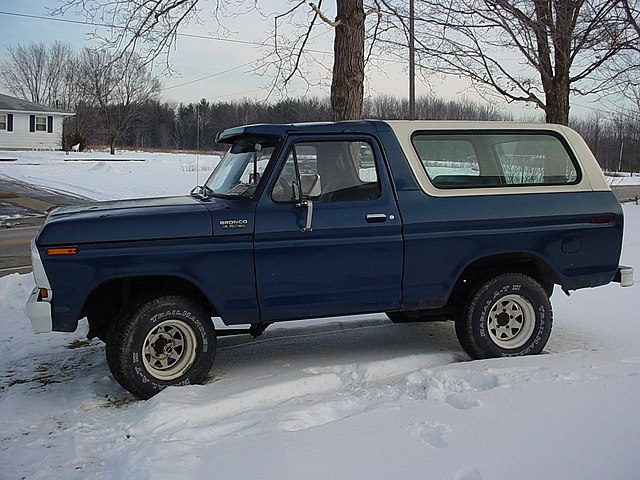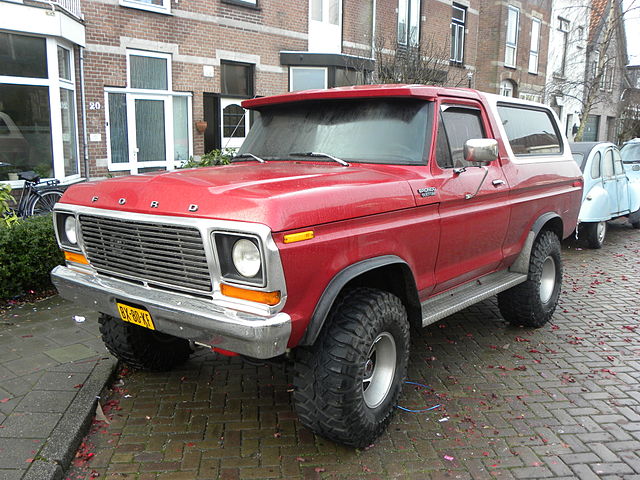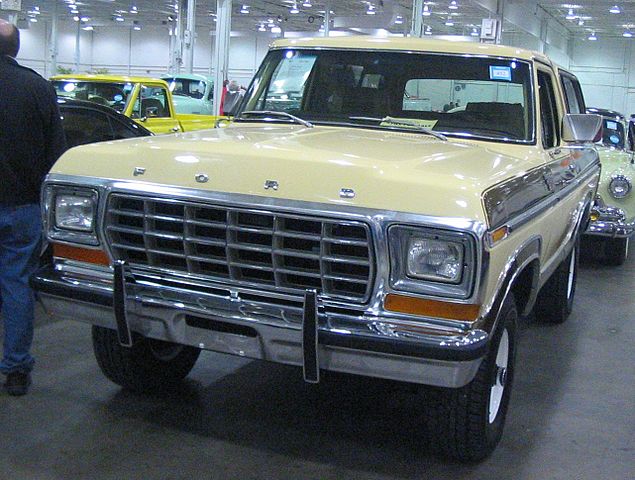
The Ford Bronco, introduced in 1966, quickly became a staple in the world of off-road vehicles, offering a blend of toughness and reliability that appealed to adventurers and casual drivers alike. The second generation of this iconic model, which spanned just two years from 1978 to 1979, marked a significant evolution in its design and capabilities.
This article explores the development, features, and legacy of the Ford Bronco’s second generation.
Introduction to the Second Generation

The second generation Bronco was a departure from the compact SUV that had been introduced in the 1960s. Ford shifted towards a larger, more robust vehicle to compete with other large SUVs of the time, like the Chevrolet Blazer and the Dodge Ramcharger.
This section delves into the context and reasons behind the redesign of the Ford Bronco during this era.
Development and Design
In the mid-1970s, Ford decided to reposition the Bronco as a larger, more powerful vehicle. The redesign was aimed at attracting a broader market by offering more room and improved off-road capabilities without sacrificing the rugged charm that the Bronco was known for.
The 1978 model was built on the F-100 truck platform, which provided a more spacious interior and a stronger foundation for off-road durability.
Key Features and Innovations
The second generation Bronco introduced several key features that distinguished it from its predecessor:
- Size and Build: With a wheelbase of 104 inches, it was significantly larger than the first generation’s 92 inches.
- Powertrain Options: It offered a choice between a 351 cubic-inch V8 and a 400 cubic-inch V8 engine, providing substantial power and torque.
- Removable Hardtop: Like the earlier models, it featured a removable hardtop, making it versatile and fun for open-air driving experiences.
Performance and Specifications

The performance of the 1978-1979 Ford Bronco was a major selling point. This section covers the specifications, engine performance, and drivetrain of the second generation Bronco.
Engine Options and Output
The 351M (Modified) and the 400 cubic-inch engines were part of Ford’s Cleveland V8 engine family. The 351M offered around 156 horsepower and 262 lb-ft of torque, while the 400 provided 169 horsepower and 315 lb-ft of torque, making these Broncos powerful performers both on and off the road.
Drivetrain and Suspension
The vehicle came equipped with a part-time four-wheel drive system, featuring manual locking hubs and an optional three-speed automatic transmission. Its suspension system included a live axle with leaf springs at the rear and coil springs at the front, designed to handle rough terrain with ease.
Interior and Features
Despite being built for toughness, the interior of the second generation Bronco was designed with comfort in mind, which was a step up from the more utilitarian first generation.
Comfort and Space
The larger size of the second generation Bronco allowed for a more spacious interior, capable of seating up to five adults comfortably. It also featured a rear bench seat that could be folded down for additional cargo space, making it practical for various uses from family trips to towing.
Technological Enhancements
Though not laden with technology by today’s standards, the 1978-1979 Bronco did offer some advancements for its time, such as an optional CB radio, air conditioning, and a tilt steering wheel.
Market Impact and Legacy

The second generation Bronco had a short production span, but it left a lasting impact on the SUV market and solidified the Bronco’s reputation as a versatile and durable vehicle.
Sales and Reception
During its two-year production run, the Bronco was well-received for its enhanced off-road capabilities and robust engine performance. It appealed to a segment of consumers looking for a vehicle that could handle both everyday driving and more rugged outdoor activities.
Lasting Legacy
The legacy of the second generation Bronco is evident in the way it paved the way for subsequent generations. It demonstrated the market’s desire for larger, more powerful SUVs, influencing not only future Bronco designs but also the development of competitor vehicles.
Preservation and Restoration: Keeping the 2nd Generation Bronco Alive

The preservation and restoration of classic vehicles like the second generation Ford Bronco are vital in keeping automotive history alive. Enthusiasts and collectors around the world invest time, effort, and resources into restoring these classic SUVs to their former glory.
This section highlights the challenges and rewards associated with preserving and restoring the 1978-1979 Ford Bronco.
Challenges in Restoration
Restoring a second generation Bronco presents several unique challenges:
- Availability of Parts: Given the limited production run, finding original or high-quality aftermarket parts can be difficult and expensive. Parts such as body panels, engine components, and specific interior items might require extensive search efforts or custom fabrication.
- Rust and Wear: As with many older vehicles, rust is a major concern, particularly for Broncos that were frequently used off-road or in harsh climates. Addressing rust can require complex body work and replacement of major structural components.
- Maintaining Authenticity: For purists, keeping the restoration as authentic as possible to the original factory condition is a priority, which can limit the use of modern improvements or non-original parts that might enhance performance or durability.
Resources and Community Support
Despite these challenges, numerous resources are available to aid in the restoration process:
- Clubs and Online Communities: There are several Bronco enthusiast clubs and online forums where owners can share advice, parts sources, and restoration tips. These communities are invaluable for both novice and experienced restorers.
- Specialty Shops: A number of specialty shops have emerged that focus specifically on restoring Broncos. These experts have the skills and resources to tackle even the most challenging restoration projects.
- Literature and Manuals: Original shop manuals, restoration guides, and books about the Bronco’s history are crucial for those undertaking a restoration project. These resources ensure that the work adheres to original specifications and techniques.
The Rewards of Restoration
Restoring a second generation Bronco is not just about overcoming challenges; it is also incredibly rewarding:
- Cultural Significance: Bringing a piece of automotive history back to life allows for the culture and era of the late 1970s to be appreciated by new generations.
- Personal Satisfaction: There is immense personal satisfaction in completing a restoration project, especially when bringing back to life a vehicle as iconic as the Bronco. It provides a tangible connection to the past and a sense of accomplishment.
- Financial Value: Well-restored Broncos are highly sought after in the collector’s market. A well-executed restoration can significantly increase the vehicle’s value, making it a worthwhile investment for many.
Conclusion: The Enduring Appeal of the 2nd Generation Bronco
Although it was produced for only two years, the second generation Ford Bronco remains a beloved model among classic car enthusiasts and collectors. Its blend of ruggedness, power, and versatility continues to make it a sought-after classic in the automotive world.
The short-lived but significant impact of this model demonstrates how pivotal it was in shaping the future of the SUV category, making it a noteworthy chapter in Ford’s automotive history.
